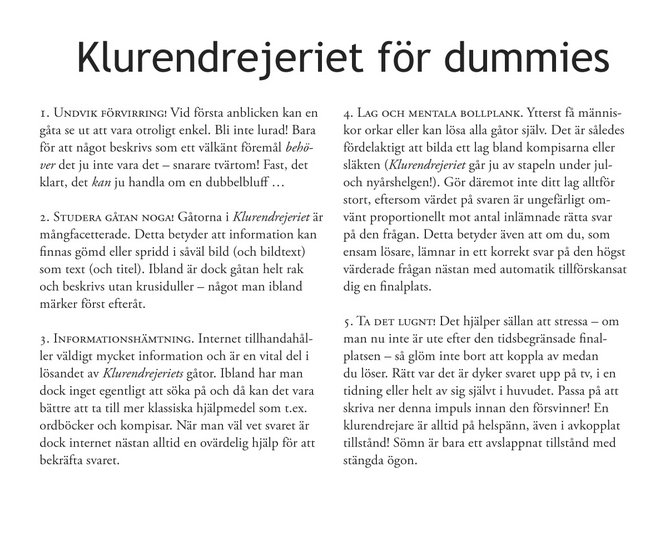
One equals the other?
The Swedish language may have many quirks and traps one can fall into, but no other is as clear as the number one. There are two separate words for one in Swedish, en and ett corresponding to the two main grammatical genders the language has. The former one is called n-genus (also reale or utrum) as it uses the suffix -n, whereas the latter one is called t-genus (also neutrum) with suffixes -t. When learning Swedish, one normally learns the genus of the word at the same time. There are a few very fuzzy rules though these are really not worth remembering. To complicate matters slightly, the plural form of t-genus words is oftentimes -n (if it is not a null plural), but that is different lesson entirely!
Let us put this new Swedish knowledge to the test! In a Swedish rebus, such as the one in question 1. EXPRESSIONS FOR IMPRESSIONS in Klurendrejeriet® mini, it is impossible even for a native Swedish speaker to know beforehand if it should be read en or ett. Once reached, however, the correct answer only yields one solution and the other turns into gobbledygook. Hopefully this can shed some light on the problem non-Swedish participants might have with Swedish.






No comments:
Post a Comment